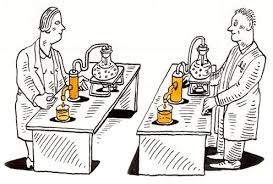 Enhancing the reproducibility of results has become a topic of many conversations within the scientific community. There is a growing alarm about results that cannot be reproduced due to the complexity of experiments or to the pressure on researchers.
Enhancing the reproducibility of results has become a topic of many conversations within the scientific community. There is a growing alarm about results that cannot be reproduced due to the complexity of experiments or to the pressure on researchers.
Reproducibility is not only a moral responsibility with respect to the scientific field, but a lack of reproducibility can also be a burden for your own organization.
A good practice of reproducibility is necessary in order to extend previously developed methodology to new applications or new data, or to allow reuse of results for new projects with a minimum of effort and cost.
“One of the biggest barriers to reproducibility is simply know how the original research was done”
Descriptions contained in scholar publications are rarely sufficient to convince readers for the reliability of data. A greater degree of transparency from the beginning and all alongside the project makes the work of replicating less dubious. The most fundamental strategy for enabling reproducibility is to provide a detailed, written description of the process. Biocorpora databases enable scientists to describe the way studies were done in detail.
The experimental protocol and all experimental details, such as date, operator and conditions such as concentration, dose, number of replicates, vehicle, species, target, … are kept and validated to enable the comparison of results. Biological results are imported into the database as structured items that are used to index or group data and to calculate averages for any type of results, and merge other statistical values per compound or per batch.
Biocorpora also tracks documents associated with a study (raw data files, assay reports and other documentation), store them in the database as reference files and archive documents for future reference. Files and results can be accessed in a few clicks from the compound page, from the batch name, assay protocol, or study name. Document versioning allows authorized users to view and compare document versions.
As a conclusion, “replication is really really hard and some results can be reproduced very easily, others get reproduced under specific conditions and others are not reproduced at all”. Biocorpora databases store all experimental data and details to help scientists in daily work and make researches as reproducible as possible for further use or sharing.
